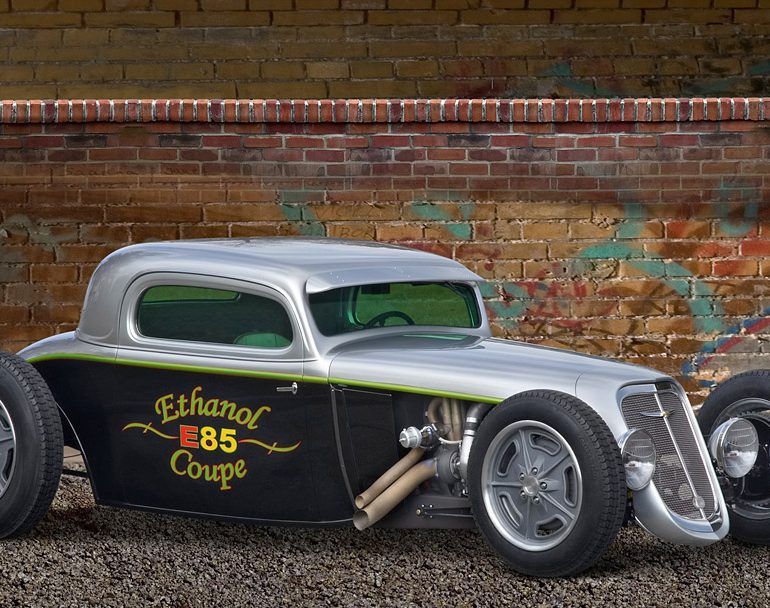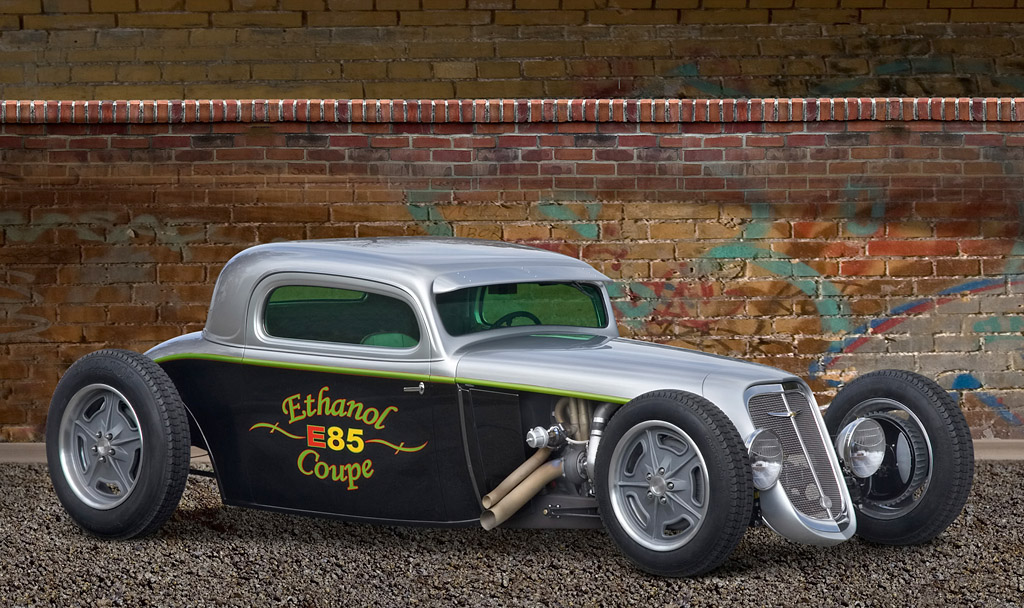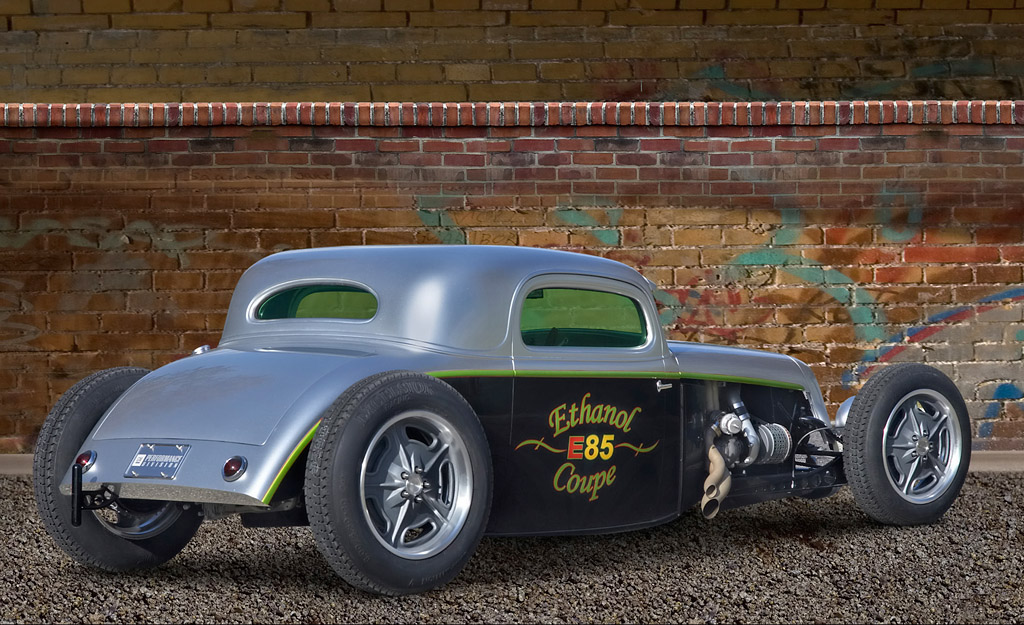2007 Chevrolet Coupe E85
With a 500-horsepower engine, a channeled body and a chopped top, GM’s custom street rod looks right at home on the salt flats of Bonneville. But instead of a traditional gasoline V-8, this ’34 Chevy replica rod sports a turbocharged 2.0L Ecotec engine that runs on E85 ethanol. Appropriately, it has been dubbed the FlexFuel Chevy Hot Rod.
”Since the 1930’s, hot rods have embodied American ingenuity, aesthetic flair and the quest for performance,” said Bryan Nesbitt, vice-president of General Motors North American Design. ”The ethanol Hot Rod is a modern statement that today’s hot rodder can address energy concerns about the consumption of petroleum without sacrificing performance or style.”
The car’s low-slung stance and stripped-down essence suggests track cars and speed racers of the late 1940s and early 1950s. Open hood sides reveal the high-powered Ecotec engine, which has been pumped up with the help of GM Performance Parts’ Stage III performance kit and a larger turbo. The higher octane of E85 enabled engineers to tune the engine for more power. It is backed by a GM Powertrain 5L40 five-speed automatic transmission.
”The engine was built using the basic recipe that is available in the Ecotec performance book available from GM Performance Parts,” said Al Oppenheiser, GM Performance Division director of concept and vehicle integration. ”Also, the E85 conversion is based on a kit that GM is exploring for regular production engines.”
True hot rod aesthetic
Like hot rods built for the last 60 years, the FlexFuel Hot Rod is built from an assemblage of factory and aftermarket parts. The frame and body are based on the 1934 Chevy, but both were fabricated by the craftsmen at the GM Performance Division (GMPD). The body has been sectioned and channeled to give the car its true hot rod aesthetic, while the frame is a one-off piece designed, engineered and built by GMPD. The slanted grille – with a unique chrome mesh pattern – and hood are integrated for a smoother look, which includes a sun visor characteristic of period hot rod racers.
Like any good rod worth its salt, there are no fenders or running boards; the 10-inch headlamps are mounted to the core support. The front suspension is all custom-built, complete with period-perfect lightening holes drilled in it.
A sturdy 8-3/8-inch Winters Quick-change rearend is suspended by a parallel four-link suspension. It is filled with 5.20 gears, which are used to generate brisk acceleration with 35-inch-tall, racing-type Excelsior rear tires and 29-inch-tall front tires. The tires are mounted on custom 18-inch front and 20-inch rear kidney bean style wheels from Budnik.
Steering comes from a custom-fabricated linkage that is connected to a reversed Corvair steering box. The linkage is mounted to the outside of the frame rail.
Hand-crafted cabin
Inside, the FlexFuel Hot Rod maintains its racing-inspired minimalist theme, but with contemporary feel. Hand-formed sheet metal and earth-friendly materials were used to trim the cabin, as well as the racing-style aluminum seats. The dashboard was hand-finished, too, and filled with traditional-looking Stewart-Warner gauges.
One of the interior’s central points of interest is the racing-style driveshaft tube, which covers the custom driveshaft. It is a prominent fixture in the cabin because the body has been lowered around the chassis to achieve the streamlined appearance that was characteristic of old-school hot rods.
Road ready
More than just a conceptualized vision of an alternative-fuel street rod, the FlexFuel Hot Rod is a driver that GM Performance Division will press into service for a number of road events and tests.
This thing is going to rack up a lot of miles,said Oppenheiser. ”With the FlexFuel conversion, it can run purely on E85, gasoline or any combination of the two. That means it can be refueled anywhere the road takes it.”
2007 Chevrolet Coupe E85 Gallery
See full 2007 Chevrolet Coupe E85 Gallery
In Detail
| type | Concept / Prototype Car |
| released at | 2007 SEMA |
| built at | USA |






